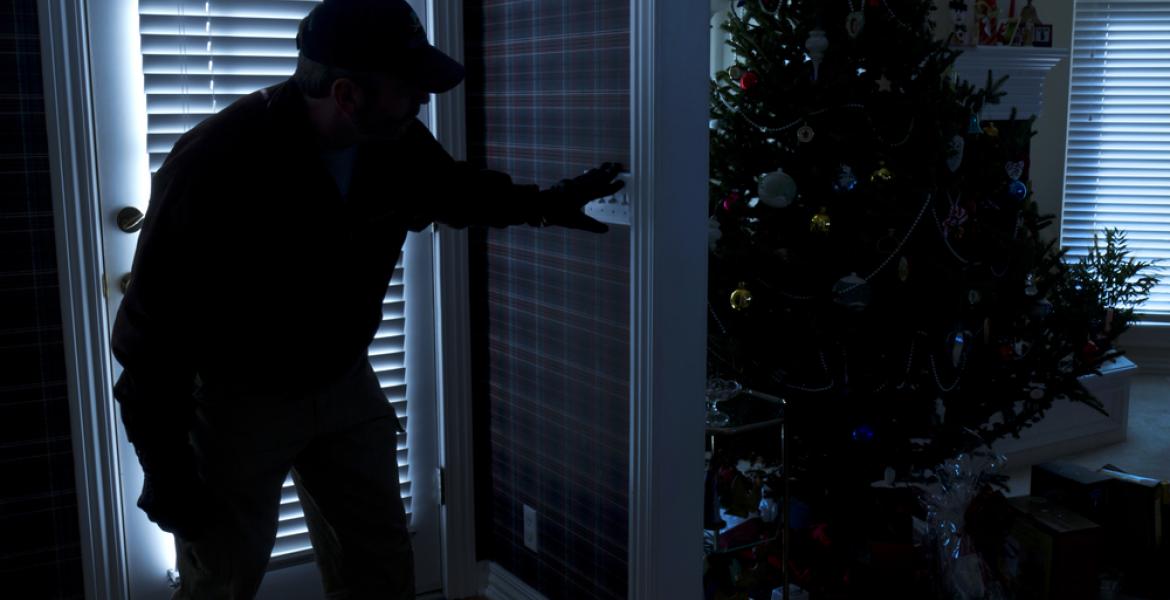When retired Lt. David Faison was still working as a Tom Green County Deputy Sheriff, he went to arrest a local dignitary as part of a fundraising event that saw notable members of the community “locked up” in a makeshift jail with donation bonds set for their release.
“We talk about family violence being something that always happens to all the unfortunate people, but on that certain occasion I was out picking up a lot of people that were substantial in the community—this one was a doctor,” he recalled. “I was supposed to pick him up, but he actually had to go into surgery. I talked to his wife and noticed some bruises on each of her arms, and as soon as I noticed them, she quickly made up this story that of course, through my training and experience, I knew to be an untrue story.”
The bruises looked like the woman had been grabbed, Faison recalled, and he immediately wondered if the marks had been left in a family violence episode that played out behind closed doors in one of the city’s well-to-do neighborhoods.
| YEAR | |||
| MONTH | 2013 | 2014 | 2015 |
| January | 139 | 122 | 144 |
| February | 104 | 89 | 121 |
| March | 138 | 131 | 160 |
| April | 135 | 150 | 163 |
| May | 144 | 141 | 162 |
| June | 145 | 129 | 166 |
| July | 118 | 127 | 163 |
| August | 127 | 141 | 196 |
| September | 145 | 137 | 144 |
| October | 138 | 145 | 100* |
| November | 140 | 155 | |
| December | 103 | 140 | |
| Grand Total | 1576 | 1607 | 1519 |
* October goes through the third week only.
“Sometimes the abuse is so hard and it’s something that’s sheltered that [people think], ‘well, it doesn’t happen here.’ But we know it does,” Faison said. “It’s not [happening] as much as the lower socioeconomic class…but to say that the upper class people are immune from it is not true. They are just as susceptible to it, and it does happen, I just don’t think it happens as frequently.”
Faison is currently employed as the Training Coordinator at the Concho Valley Regional Law Enforcement Academy, where he instructs rookie deputies and others attending peace officer courses on a variety of subjects. Faison also teaches a session on family and domestic violence to new volunteers at the Tom Green County Crisis Intervention Unit (CIU), who respond to emergency calls to support victims of violence and other crimes at the invitation of law enforcement.
This year, the CIU has seen a slight uptick in the number of victims they’ve assisted at 133 between June and August over last year’s 121. But while the difference is minimal, the SAPD reports an average of 28 more calls for domestic or family violence per month in 2015 over 2014, the highest of which was in August, which showed 196 this year as opposed to 141 last year.
The reason behind the sudden increase is difficult to gauge, but Public Information Officer Tracy Gonzalez noted a number of factors that could play into this year’s spike.
“There is definitely no one answer,” Gonzalez said, naming off enhanced community awareness, financial stress and population increase as some of the major contributors to a rise or fall in reports of abuse.
However, while the numbers do fluctuate each month, those for each of the first nine months of 2015 have been significantly higher than the same month the year prior, and that by a high margin (an average of 28) in almost every case. In 2014, by comparison, the number of domestic/family violence calls per month increased only seven months out of the year at an average of 16 more calls per month. The highest increase came in December 2014, when the police department received a 140 emergency calls for domestic or family violence as compared to the 103 reported in 2013.
Rita Guthrie, Director of the Tom Green County Crisis Intervention Unit, said she and her volunteers do frequently see repeat victims or new victims with the same perpetrator, estimating that a victim will leave an abusive relationship five to eight times before that separation is final. When that individual dissolves the relationship and the perpetrator enters into a new one, the cycle of violence is most often repeated.
“If she (a new girlfriend or wife) knew that he was abusive to former girlfriends or wives, he would always give her the story that they were horrible people, and they cheated on him, and they did this and that, and they deserved it,” Guthrie said as example. “She thought he would never do that to her since she would never do those things. But most of the time if somebody’s abusive, they’re going to be abusive in every intimate relationship.”
Guthrie cited victim blaming is one of the biggest issues from a community perspective, which may include the belief that a perpetrator’s past partner deserved the abuse or assign blame for its continuance because the victim did not leave the first time. The problem with that line of thinking, she said, is that it lends to re-victimization.
‘Rather than asking why a victim doesn’t leave, we should be asking what is preventing him or her from doing so,’ Guthrie explained.
Some of those things may include wanting to keep their family together for the sake of the children, worry over how to finance the move, or fear of the batterer’s escalating behavior when the time comes to move out.
“They’re thinking in terms of their children: ‘Well, my spouse is the provider. If I leave, how are my kids going to eat? You know, he’s told me that if I leave, we’re not taking anything because he’s the one that bought everything. So my kids are going to be without. My dogs—what do we do with our loved animals?’” Gonzalez provided example. “Most women and men go through this thing in their head where they put everything else before their need of well-being, so it’s really scary to leave. It’s not what we think, and until we’ve walked in their shoes, we need to keep our mouths shut and not judge victims for not leaving. That’s incredibly unfair.”
The most dangerous time for a victim of family violence is when they’re leaving, Guthrie pointed out, so careful planning is often integral to successful and safe escape. While the Crisis Intervention Unit does respond to emergency calls, their office is always open to victims seeking help or guidance, and Guthrie said she and her staff are willing to meet or talk with people over the phone who would like information. The phone number is 325-658-3921.
For those who have not yet made it out of an abusive relationship, “I would advise them to get with an advocate to develop an escape plan before they take it upon themselves, because the biggest mistake you can make is to tell the abuser you’re leaving,” Guthrie said. “When you’re leaving is the most dangerous time, and it will escalate.”
In addition to the CIU, the National Domestic Violence Hotline (1-800-799-7233), the local family shelter hotline (800-749-8631) and LoveIsRespect.org are resources Guthrie suggested as other avenues of getting help. Gonzalez noted that on a local level, many of those in positions to help have been through abuse themselves and understand the difficulty of family violence situations.
Referring back to Faison’s story about the doctor’s wife, Gonzalez added: “I think it’s important for the community to really be aware and make a conscious decision to stop putting the stigma or the label on battered persons. People tend to have this image in their head of underprivileged, a lower income, weak personality [as victims]. We need to get that out of our heads because it just contributes to the victimization of these individuals. Battered people come from all tax brackets, all types of family backgrounds, different levels of education, and it’s an abusive relationship, period.”
Subscribe to the LIVE! Daily
Required






Post a comment to this article here: